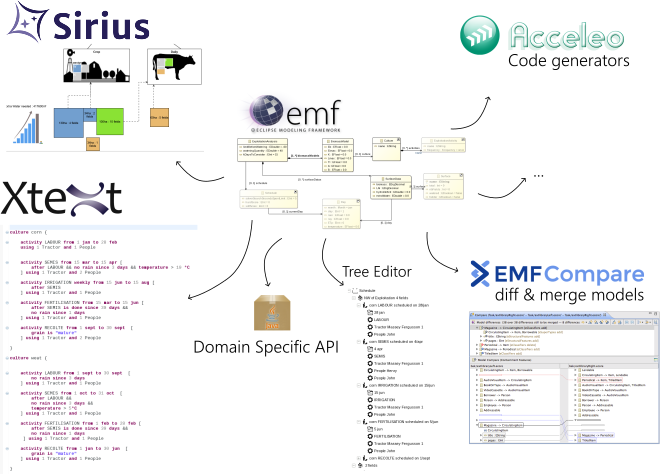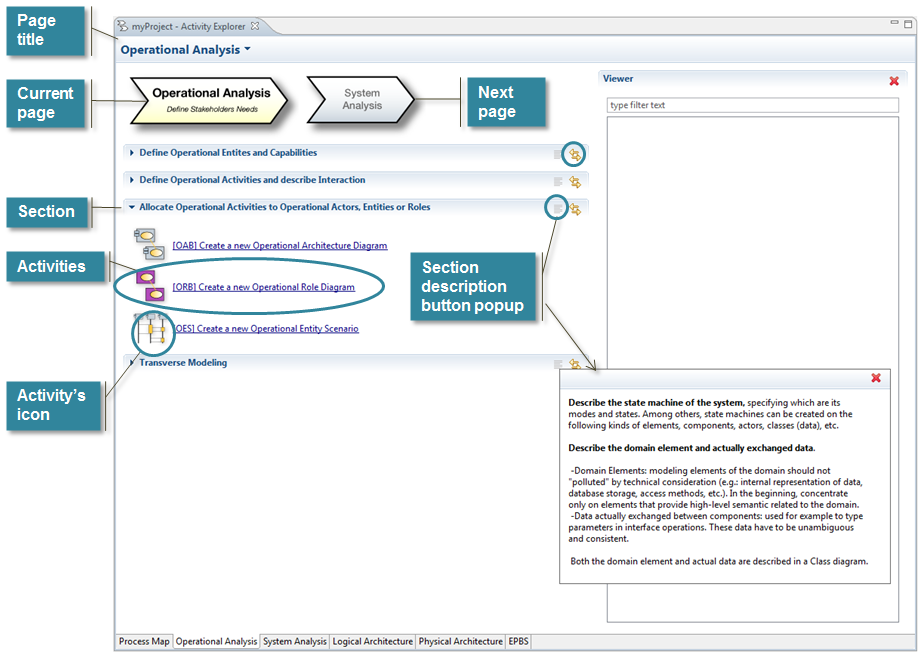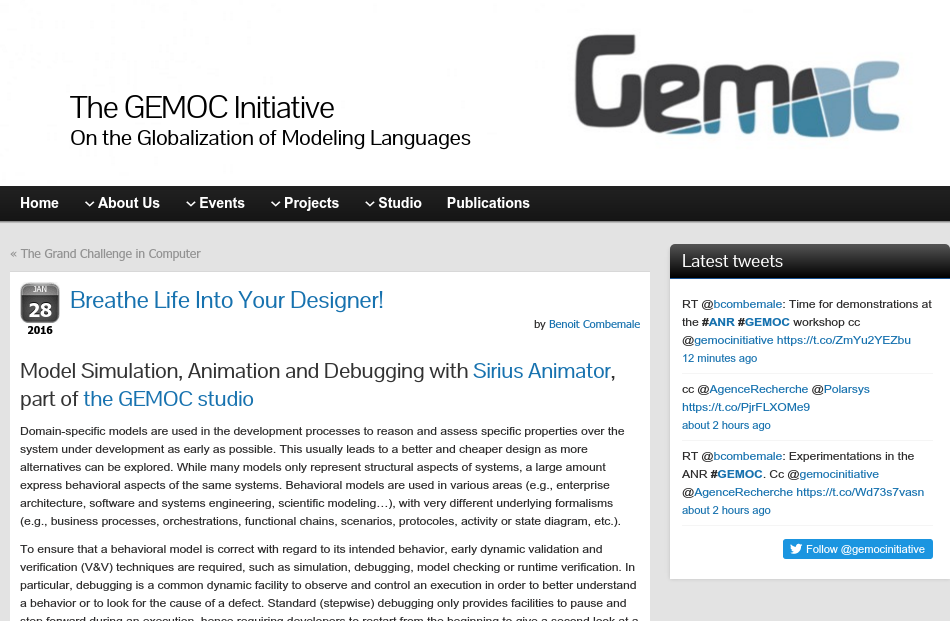This is an index page for the Metamodel (Ecore) Design Checklist serie, a condensed version listing all the rules of the article (part1 and part2) for your convenience.
I compiled the following checklist based on my personal experience, this is not exhaustive and I expect it to live and get richer over time.
Most of the checks stated here are very easy to comply with when considered from the start.
When it’s later down the road the gain/risk ratio should be evaluated as some changes might need to update some code, some files or might just be too much work to be worth it then.
Because of this and because we sometime learned the hard way you might quite easily find some Ecore models I authored which are not 100% compliant with this list ;).
By the way, feel free to tell me about your own rules, I might add it to the list!
Ground rules
The purpose and audience of the models are stated
☑
The nsURI is the definitive one and is consistent with...
Blog
This article is the second part of a series focusing on metamodel design (more especially Ecore models).
Following the first part focused on some ground rules this second part is focused on slightly more technical aspects: scalability and Java. The general disclaimer still applies:
Most of the checks stated here are very easy to comply with when considered from the start but might not be that cheap later on.
Furthermore this list is not exhaustive and not necessary the unique and unviversal truth. Your mileage may vary but then tell me about it!
Scalability
The design of your Ecore model has scalability and performances implications, most especially memory and I/O wise but not only.
If you want to get the most of Eclipse Modeling technologies in general you should check the following items.
☑ Instances which will be present a lot in the models have a concise serialization
Ask yourself: how many instances of this EClass will I usually have in a model? If the answer i...
Be meticulous with the model describing your domain!
So many aspects of your tool will trickle down from your Ecore model that it pays a lot to pause for a bit and do some basic sanity checks.
The Ecore model in the center is the basis for so many things!
Eclipse Modeling technologies are enabling you to build graphical, tree or textual editors, connectors to import or export data, code generators and all of these
features in your tool are directly tied or infered from an Ecore model. Better get it right.
I compiled the following checklist based on my personal experience, this is not exhaustive and I expect it to live and get richer over time.
Most of the checks stated here are very easy to comply with when considered from the start.
When it’s later down the road the gain/risk ratio should be evaluated as some changes might need to update some code, some files or might just be too much work to be worth it then.
Because of this and because we sometime learned the...
The teams have been working hard and pushed many changes. I’ve been tweeting those as they went but I figured that compiling a list into a blogpost could be useful.
Here are some noteworthy, this is not an exhaustive list and please if you thing I should have added something, reach to me on the mattermost instance before M7.
Modeling Amalgam
Thales contributed in Amalgam the building blocks to create views similar to those used in Capella.
The features are now part of the Neon update site and can be consumed by other projects, starting by EcoreTools.
You’ll find some documentation on the wiki here and there, Capella’s source code is also a good starting point.
Platform/SWT
Many and important improvements in Linux/GTK3 support, notably Issue in layout of editors (“leaking” rulers).
SWT now auto-detects the scaling factor which might be needed on HiDPI screens but the linux support is not perfect and it looks like GTK is giving a hard time to the commiters
here again, in the me...
As the Gemoc project is close to completion and as the question of animating the domain specific model with Sirius was asked to me quite frequently in the last few events I attended to, Benoit and I wrote a small article about model debugging (even featuring a short video). Check it out on the Gemoc website !
Breathe Life Into Your Designer!
Executing, Debugging and Animating your model was originally published by Cédric Brun at CTO @ Obeo on March 17, 2016.Lien d'origineAuteur d'origine: Cédric Brun...






